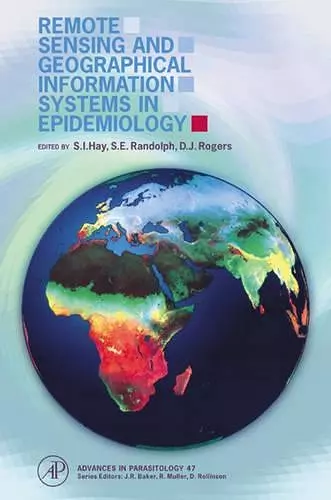Remote Sensing and Geographical Information Systems in Epidemiology
Ralph Muller editor John R Baker editor David Rollinson editor SI Hay editor David F Rogers editor Sarah E Randolph editor
Format:Paperback
Publisher:Elsevier Science Publishing Co Inc
Currently unavailable, and unfortunately no date known when it will be back

Key Features * Only book to provide a synthesis of complex biology, quantitative analysis, space technology and practical applications, focused on solving real epidemiological problems on a global scale * Broad scope, with methods relevant to subjects ranging from biodiversity to public health * Practical advice on relevant courses * 24 pages of colour plates
Provides a synthesis of complex biology, quantitative analysis, space technology and practical applications, focused on solving real epidemiological problems on a global scale. This book presents a comprehensive guide to using the methods of surveillance from satellites, including analysing spatial data within geographical information systems.Global problems require global information, which satellites can now provide. With ever more sophisticated control methods being developed for infectious diseases, our ability to map spatial and temporal variation in risk is more important than ever. Only then may we plan control campaigns and deliver novel interventions and remedies where the need is greatest, and sustainable success is most likely. This book presents a comprehensive guide to using the very latest methods of surveillance from satellites, including analysing spatial data within geographical information systems, interpreting complex biological patterns, and predicting risk both today and as it may change in the future. Of all infectious disease systems, those that involve free-living invertebrate vectors or intermediate hosts are most susceptible to changing environmental conditions, and have hitherto received most attention from the marriage of analytical biology with this new space technology. Accordingly, this volume presents detailed case studies on malaria, African trypanosomiasis (sleeping sickness), tick-borne infections and helminths (worms). For those who are unfamiliar with this science, and unsure how to start, the book ends with a chapter of practical advice on where to seek hands-on instruction. The lessons to be learned from these studies are applicable to many other epidemiological and ecological problems that face us today, most significantly the preservation of the world's biodiversity.
ISBN: 9780123335609
Dimensions: unknown
Weight: 690g
357 pages